Welcome to the web of fear, my intrepid urban explorers and armchair adventurers! Ever found yourself frozen in horror at the sight of a spider chilling in your bathtub? You’re not alone. Spiders strike fear into the hearts of many and, for good reason when it comes to the most deadly spiders in the world.
Spiders, with their eight-legged elegance and mysterious ways, have been weaving nightmares into human folklore for centuries. But what separates an ordinary wall-crawler from the venomous villains?
1. Brazilian Wandering Spider: The Nomadic Nightmare
First up on our list of eight-legged horrors is the Brazilian Wandering Spider, also known as the Phoneutria. This spider doesn’t just sit pretty in a web; it prefers a life of adventure, wandering the tropical forests of South America by night. But don’t let its nomadic lifestyle fool you. The Brazilian Wandering Spider is packing a potent neurotoxic cocktail that can cause everything from severe pain and inflammation to, in rare cases, paralysis and death. Yikes!
These spiders are like the bad boys of the arachnid world—unpredictable, dangerously attractive (to entomologists, anyway), and absolutely not to be messed with. They’ve been known to hitch rides in banana shipments, turning a routine unboxing at your local grocery store into an episode of “Fear Factor.” If you’re traveling or living in South America, keep an eye out for these wanderers. They’re as likely to pop up in your shoes as they are in banana bunches. Should you encounter one, don’t try to be a hero—give it space, and let it go on its merry way.
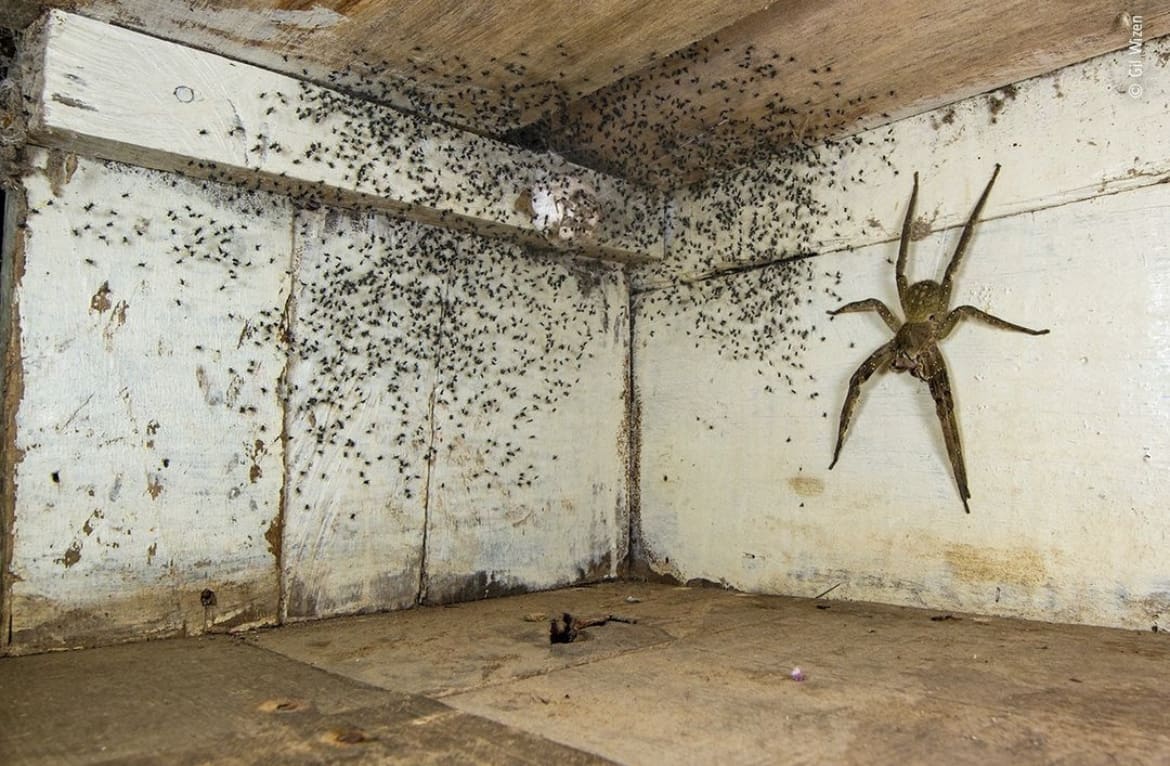
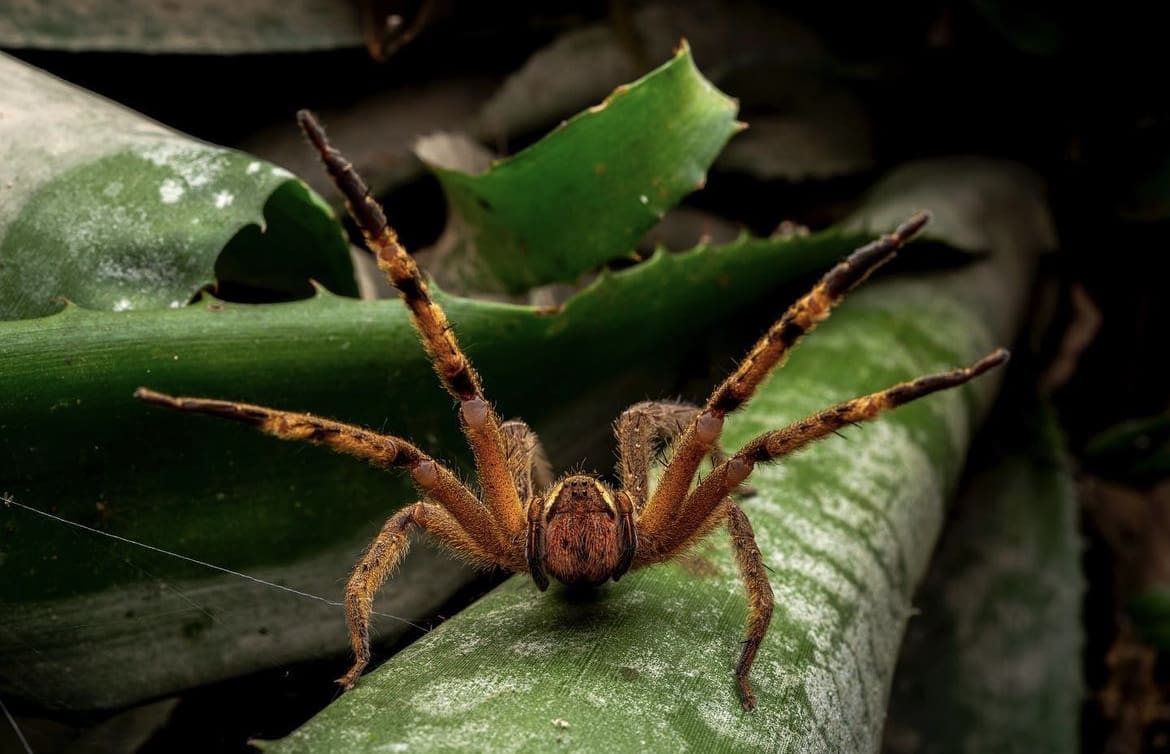
2. Sydney Funnel-Web Spider: Australia’s Lethal Landlord
Ah, Australia, the land of kangaroos, stunning beaches, and spiders that are the stuff of legend. Enter the Sydney Funnel-Web Spider, Atrax robustus, a creature so formidable it might just make you rethink that Sydney Harbor selfie. This spider has fangs that can pierce through fingernails and venom that can turn a grown adult into a sobbing mess in minutes. Seriously, these guys are the ultimate party crashers.
With a glossy, black body that screams “I mean business,” the Sydney Funnel-Web prefers to hang out in moist, shaded areas. So, if you’re in Sydney or its surrounding areas, maybe don’t stick your hands into random crevices or piles of leaves. Just a thought. And here’s a fun fact: only the males go roaming, looking for love and accidentally terrifying humans along the way. Their venom is incredibly potent, but thanks to the wonders of science, antivenom is available and very effective. Still, getting to know one up close is not recommended unless you’re a professional or have a strange idea of fun.
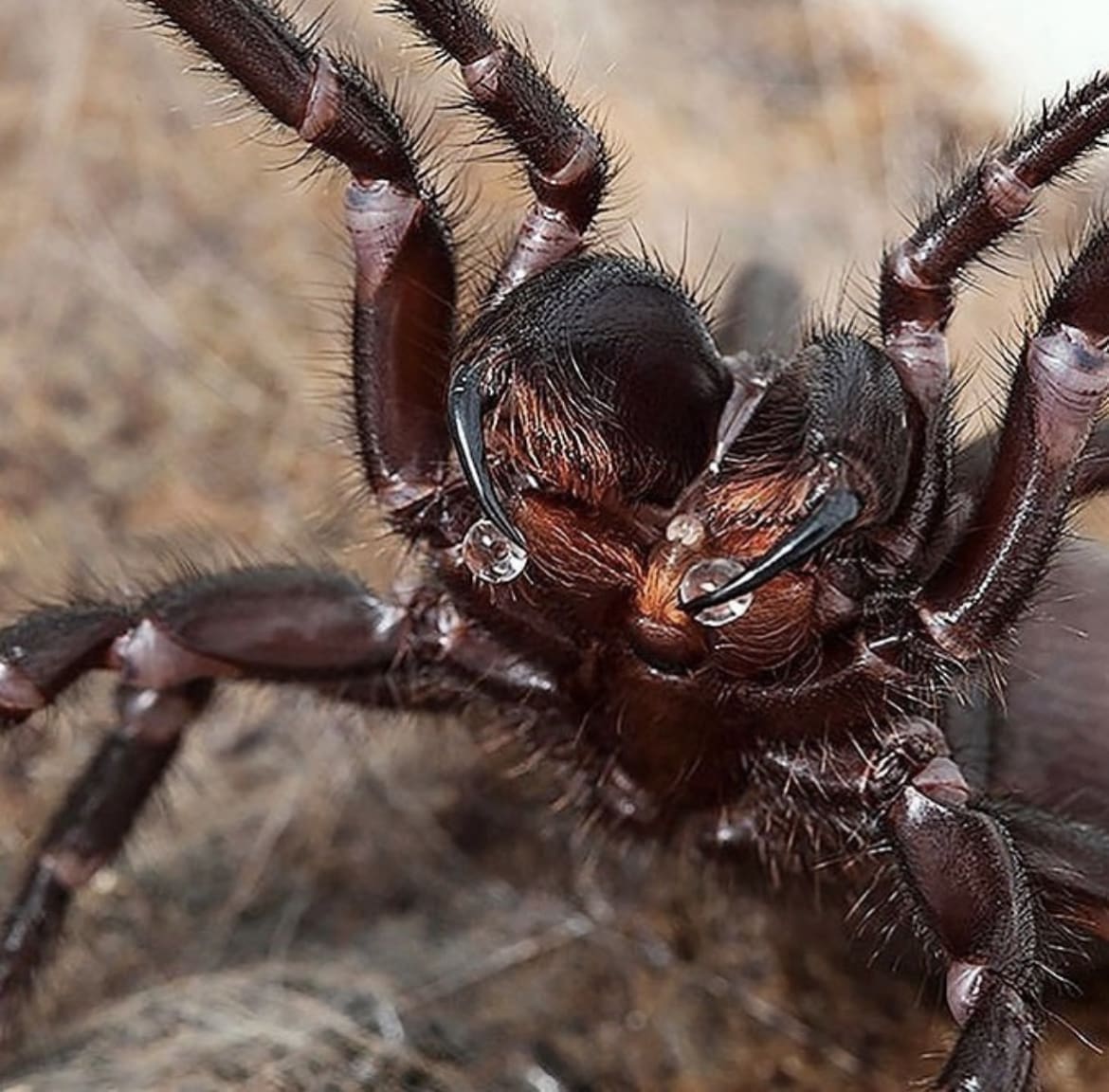
3. Brown Recluse Spider: The Silent Assassin
Now, let’s turn our attention to a spider that’s as infamous as it is misunderstood—the Brown Recluse, also known as Loxosceles reclusa. This spider is the ninja of the spider world: unassuming in appearance, but deadly effective. Sporting a violin-shaped mark on its back, the Brown Recluse prefers the quiet life, avoiding humans when it can. However, its bite is no joke, capable of causing necrosis—where the flesh around the bite essentially begins to die. Not exactly the kind of souvenir anyone wants.
Despite their reputation, Brown Recluses aren’t out to get you. They’re called recluses for a reason, preferring to chill in undisturbed areas like your attic or garage. The problem arises when we invade their space without knowing it, like when reaching into a box of Christmas decorations or slipping on a rarely worn pair of boots. To avoid unwanted encounters, keep your spaces clean and clutter-free. And maybe shake out those boots from time to time.

4. Black Widow Spider: The Iconic Femme Fatale
If there’s one spider that’s achieved celebrity status in the world of venomous critters, it’s the Black Widow, known scientifically as Latrodectus. With its shiny black body and iconic red hourglass marking, the Black Widow looks the part of a villain in a nature-themed horror flick. But as with most things in life, there’s more to the story than meets the eye.
Black Widow venom is a potent neurotoxin, designed to immobilize their prey. While bites to humans are rare and fatalities even rarer, thanks to the availability of antivenom, an encounter with a Black Widow is still something you’d want to avoid. Symptoms of a bite can include muscle pain, nausea, and difficulty breathing—basically, a really bad day.
But before you swear off going outside again, remember that Black Widows are actually quite shy. They’re not out to chase you down. Most bites occur when the spider is accidentally pressed against human skin. So, when you’re reaching into those dark corners of your shed or garage, wear gloves and pay attention. And maybe take a moment to admire the incredible resilience and design of these spiders—from a safe distance, of course.
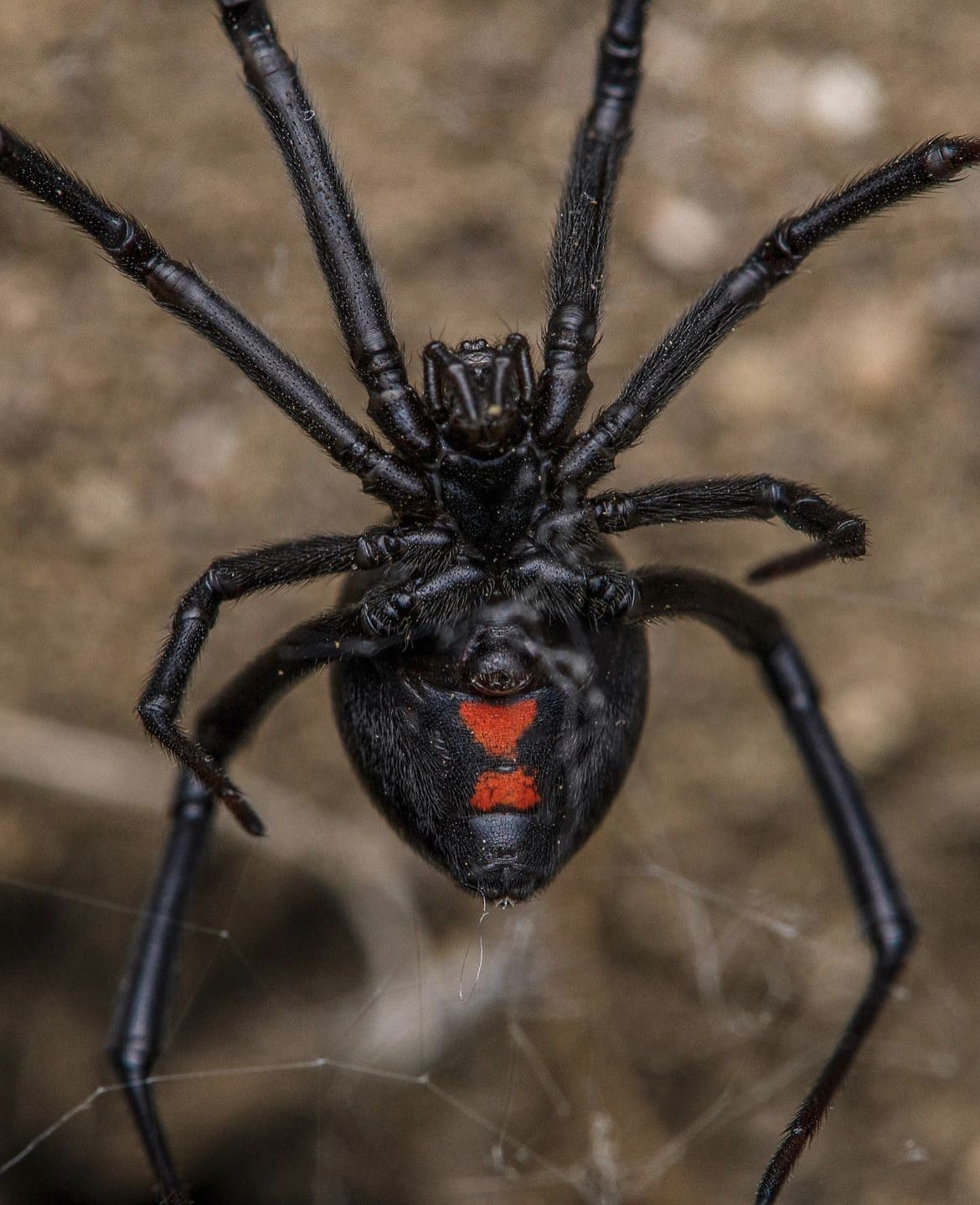
5. Australian Funnel-Web Spiders: The Extended Deadly Family
When it comes to spider families, the Australian Funnel-Web Spiders, belonging to the genus Hadronyche, are like the infamous relatives who always seem to take things up a notch. These spiders are closely related to the notorious Sydney Funnel-Web but are spread across various regions of Australia, each species with its own unique brand of danger.
These arachnids are equipped with large fangs capable of piercing through toenails—yes, you read that right, toenails—and their venom can cause serious medical emergencies. The venom of these spiders is so potent it has been known to cause human fatalities before antivenom became widely available. Their appearance is menacing, with a shiny, dark exoskeleton and a bulky body that screams “back off!”
What’s fascinating, though, is how these creatures have adapted to their environments. They build intricate funnel-shaped webs in moist, cool places, waiting patiently for prey to stumble upon their doorstep. For those living in or visiting areas known for these spiders, it’s crucial to exercise caution around rock piles, logs, and even garden shoes left outside.
Australian Funnel-Web Spiders | @bluemtns_explore
6. Six-Eyed Sand Spider: The Desert’s Deadly Dweller
Now, to a spider that’s as elusive as it is deadly—the Six-Eyed Sand Spider (Sicarius hahni). This spider takes camouflage to the next level, blending seamlessly into the desert sands of Southern Africa. Its sandy color and ability to bury itself make it nearly invisible to both prey and predators alike.
The Six-Eyed Sand Spider’s venom is the stuff of nightmares, with a potent cytotoxin that can cause severe tissue damage and even necrosis. The rarity of human bites is a small comfort, given the devastating effects of its venom. However, this spider prefers a life of solitude and is unlikely to bite unless provoked or accidentally disturbed.
What’s truly remarkable about the Six-Eyed Sand Spider is its survival strategy. In the harsh desert environment, it can go long periods without food or water, a testament to its resilience and adaptability. While it might not be the most social of spiders, its ability to thrive in such an unforgiving landscape is a marvel of evolution.
Six-Eyed Sand Spider | @ecotherm_aesthetics
7. Redback Spider: Australia’s Other Red Menace
Meet the Redback Spider (Latrodectus hasselti), a relative of the infamous Black Widow and yet another testament to Australia’s reputation as the home of some of the world’s most dangerous creatures. The Redback is easily identifiable by its sleek black body adorned with a prominent red stripe on its abdomen—a warning sign nature often employs to caution, “Stay away!”
The venom of the Redback Spider is a potent neurotoxin, capable of causing significant pain, sweating, muscle weakness, and nausea in humans. While fatalities are rare thanks to the availability of antivenom, a bite from a Redback is not something to be taken lightly. These spiders are not aggressive by nature and tend to bite only when provoked or accidentally disturbed, often when humans intrude upon their webs.
Redbacks prefer warm, sheltered spots to set up their tangled webs—underneath seats, in garden sheds, and within piles of debris. An interesting aspect of Redback society is their somewhat macabre mating ritual, where the male often ends up as a post-coital snack for the female, ensuring his nutrients contribute to the next generation. If you’re in Redback territory, always check before you reach into dark corners or disturb hidden nooks.

8. Brown Widow Spider: The Lesser-Known Threat
Venturing away from Australia, the Brown Widow Spider (Latrodectus geometricus) might not have the same level of infamy as its black cousin, but it’s every bit as intriguing. The Brown Widow sports a tan to brown color and is distinguished by the orange or yellowish hourglass on its underside. Found in warmer regions across the globe, this spider has shown remarkable adaptability, spreading far beyond its presumed African origins.
Though the Brown Widow’s venom is considered more potent than that of the Black Widow, this spider is somewhat less inclined to bite, and when it does, it often administers a “dry bite” that injects no venom. Nevertheless, a full-venom bite can result in symptoms similar to those caused by Black Widow bites, including pain, muscle cramps, and nausea.
One of the most distinctive features of the Brown Widow is its egg sac, a spiky, spherical structure that serves as a protective fortress for its eggs. This feature can help in identifying the presence of Brown Widows, prompting a cautious response. The spider’s less aggressive nature and tendency to inhabit less trafficked areas mean encounters are relatively rare, but awareness and caution are still advised.

9. Chilean Recluse Spider: South America’s Silent Killer
The Chilean Recluse Spider (Loxosceles laeta), one of the most notorious members of the recluse spider family, earns its place on our list through its potent venom, capable of causing serious medical conditions in humans. Often found in South American regions, this spider has also made its presence known in other parts of the world, thanks to human activities.
Characterized by its reclusive nature, the Chilean Recluse prefers undisturbed hiding spots within homes and sheds, making unintentional encounters with humans a rare but potentially dangerous event.
Its venom, known for causing necrosis and systemic reactions, underscores the importance of seeking medical attention after any suspected bite. Despite their dangerous potential, these spiders play a crucial role in controlling insect populations, embodying the dual nature of being both feared and beneficial.
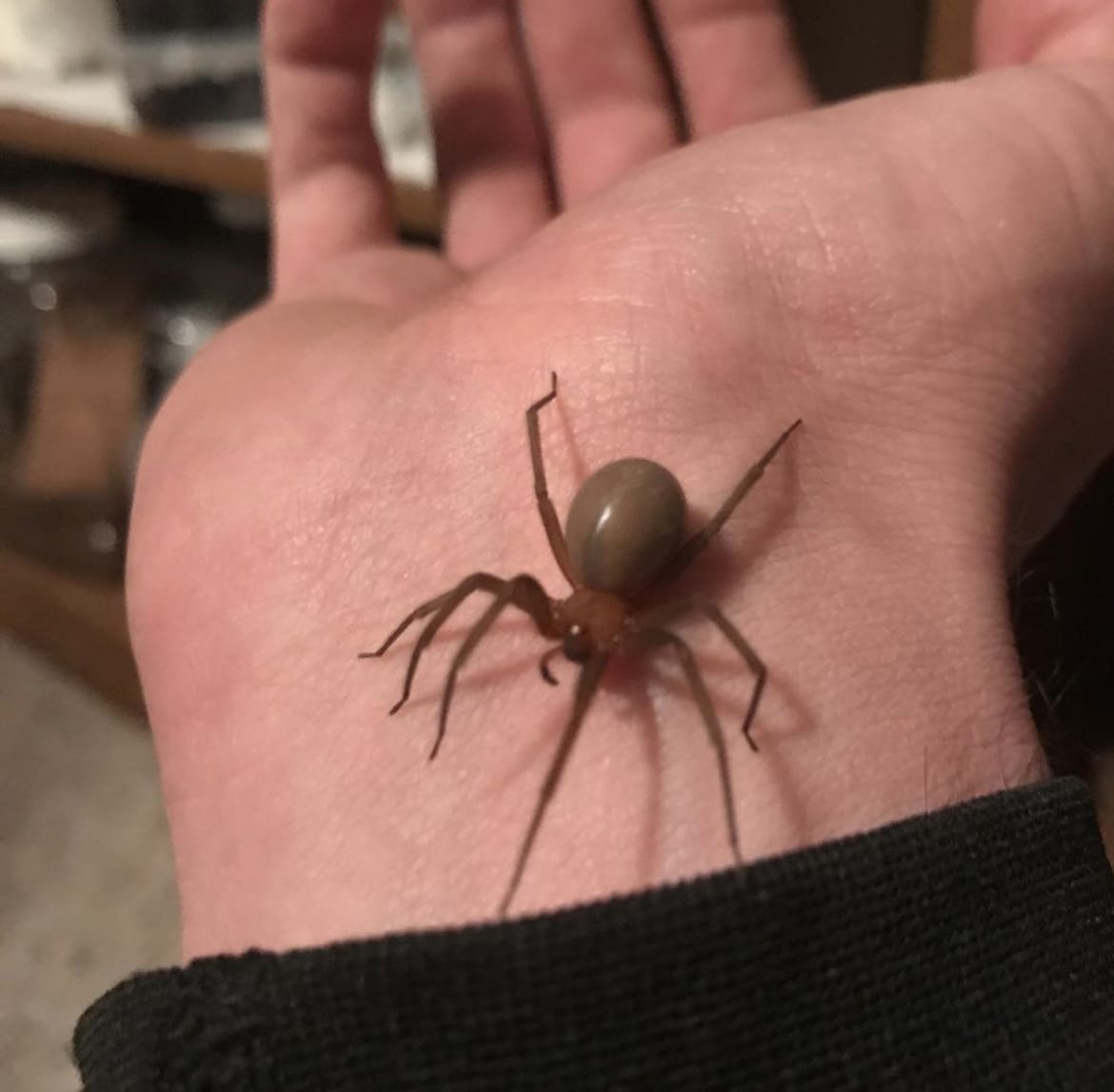
10. Yellow Sac Spider: The Unassuming Culprit
Rounding off our list is the Yellow Sac Spider (Cheiracanthium), a species that might not boast the same level of venom potency as some of its counterparts but still deserves attention due to its common presence in human environments. The Yellow Sac Spider is often identified by its pale color and the distinct sac-like web it constructs for shelter.
While their venom isn’t as life-threatening as that of other spiders on this list, a bite can still result in discomfort, redness, and mild to moderate necrotic lesions. Encounters with these spiders are more common due to their preference for living in and around homes, highlighting the need for vigilance and preventive measures to avoid unwelcome bites.

Survival Guide: Living in a Spider’s World
Understanding and coexisting with these venomous spiders require a blend of respect, knowledge, and caution. Here are a few survival tips for those looking to navigate the world safely alongside our arachnid acquaintances:
- Know Your Spiders: Learning to identify the more dangerous spiders in your area can help you assess risks and take appropriate actions.
- Home Sweet Home: Regularly inspect and clean your living spaces to discourage spiders from taking up residence.
- Stay Calm: If you encounter a venomous spider, give it space and avoid provoking it. Most spiders bite only if they feel threatened.
- Seek Immediate Help: If you suspect you’ve been bitten by a venomous spider, seek medical attention promptly to mitigate potential complications.
Our journey through the shadowed corners and hidden crevices of the world, in search of its most venomous spiders, concludes not with fear, but with a newfound respect for these remarkable creatures. While it’s natural to feel uneasy about sharing our spaces with potentially dangerous spiders, remembering their vital role in our ecosystems can help shift the narrative from fear to fascination.
Spiders, even the venomous ones, contribute to the delicate balance of nature by controlling pest populations and, in some cases, inspiring medical and scientific advancements. By understanding them, we learn not only how to coexist safely but also to appreciate the complexity and beauty of their existence.
